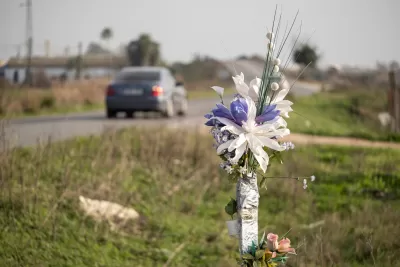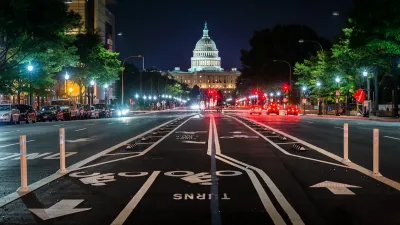Funding from the Bipartisan Infrastructure Law aimed at making streets safer is being awarded through a competitive grant program, but it’s not going to the communities that need it most, an investigation shows.

Two years into the Bipartisan Infrastructure Law’s rollout, a USA TODAY investigation has found most of the $5 billion Safe Streets and Roads for all program has so far gone to more affluent counties with lower fatality rates rather than to the disadvantaged communities it was promised to benefit. The reason? “[B]ecause the grants are structured to reward communities that already have the resources to pursue the funding,” writes USA TODAY reporter Austin Fast.
Whereas cities like Detroit, which received about $50 million from the program to improve its streets, have an 18-member grant writing staff, many small cities like Gallup, New Mexico — home to Native communities often left out of such programs but with disproportionately high traffic fatality rates — have no dedicated grant writer and therefore can’t compete with the larger cities or don’t ask for money at all. “[Gallup is] exactly the type of disadvantaged place the Biden administration promised would benefit from a massive influx of federal money for safer streets,” Fast reports.
In addition to lack of resources to complete the application, the USA TODAY investigation found additional barriers blocking the neediest communities from winning the grants, including poor communication of availability and eligibility for the funds, lack of direct outreach to disadvantaged and rural places with highest fatality rates, and lack of clarity around weighting of fatality rate when grading applications (since data shows nearly all of the money has gone to counties the U.S. Department of Transportation acknowledges have low fatality rates).
Competitive grants do have their place in rebuilding American infrastructure, Kristin Smith told USA TODAY. Smith researches public finance with Montana-based nonprofit Headwaters Economics. “But when it comes to funding that is meant to save people’s lives, that’s designed to meet people’s basic needs, a competitive grant, in my opinion, isn’t the right tool,” Smith said. “It’s regressive. You have to have resources to access it.”
FULL STORY: Safe Streets grants are supposed to save lives. Why are they missing so many deadly roads?

Alabama: Trump Terminates Settlements for Black Communities Harmed By Raw Sewage
Trump deemed the landmark civil rights agreement “illegal DEI and environmental justice policy.”

Study: Maui’s Plan to Convert Vacation Rentals to Long-Term Housing Could Cause Nearly $1 Billion Economic Loss
The plan would reduce visitor accommodation by 25% resulting in 1,900 jobs lost.

Planetizen Federal Action Tracker
A weekly monitor of how Trump’s orders and actions are impacting planners and planning in America.

Wind Energy on the Rise Despite Federal Policy Reversal
The Trump administration is revoking federal support for renewable energy, but demand for new projects continues unabated.

Passengers Flock to Caltrain After Electrification
The new electric trains are running faster and more reliably, leading to strong ridership growth on the Bay Area rail system.

Texas Churches Rally Behind ‘Yes in God’s Back Yard’ Legislation
Religious leaders want the state to reduce zoning regulations to streamline leasing church-owned land to housing developers.
Urban Design for Planners 1: Software Tools
This six-course series explores essential urban design concepts using open source software and equips planners with the tools they need to participate fully in the urban design process.
Planning for Universal Design
Learn the tools for implementing Universal Design in planning regulations.
Caltrans
Smith Gee Studio
Institute for Housing and Urban Development Studies (IHS)
City of Grandview
Harvard GSD Executive Education
Toledo-Lucas County Plan Commissions
Salt Lake City
NYU Wagner Graduate School of Public Service





























